Review: 2011 Honda Odyssey
For years Chrysler owned the minivan market. It helped that GM and Ford kept trying much different approaches, failing miserably each time. Then, for the 1999 model year, Honda introduced the second-generation Odyssey. Though Chrysler continues to sell nearly twice as many minivans as Honda, many of these are to fleets. Also, even at retail the Honda sells at a much higher average transaction price, indicating which minivan car buyers find the most desirable. With its redesign for 2011, does the Odyssey remain the most lustworthy minivan?
Designers hate minivans. Functionality is such a priority that it’s hard to do much beyond a basic box. Which might explain why, in with their latest, Chrysler’s designers have given us a basic box. Honda did much the same with the second-generation and third-generation Odyssey. (Though the latter, with some curves added to the mix, appeared bloated.)
But “clean and simple” isn’t Honda’s thing any more. So the fourth-generation Odyssey’s bodysides are marked (marred?) by a zig-zagging beltline and associated creases. While this origami won’t win any beauty contests—the Toyota Sienna is the most conventionally attractive current member of the segment—Honda’s designers deserve credit for their willingness to try something new. The unusual beltline and recessed area just above the rocker panel combine to make the new van appear much less bulky and sportier than the old one—and unlike any other minivan.
The new Odyssey’s interior is similarly the sportiest in the segment (such things being relative) courtesy of a stylishly raked center stack. But this rake also has a downside: it places the HVAC controls—unusually located above the audio system controls—too far away. Aside from this slip, the center stack controls are better designed than the average Honda’s these days, with large knobs for major functions. There aren’t as many buttons because it’s now necessary to navigate through menus, iDrive style, to perform many secondary functions. The buttons that remain are designed so they can be identified at a glance, with different shapes and only a few in each group. Interior materials are on par with Hondas past, and so better than those in the related Pilot SUV. They also appear less cheap than the oddly textured plastics in the Toyota Sienna.
The driving position is lower and less upright than in the Chrysler minivans, and so more car-like, while still providing much better visibility than in the new Nissan Quest. The shifter is located on the instrument panel, but lower down than on the Chryslers. This isn’t as handy a location for manual shifting, but then (unlike Chrysler and Toyota) Honda hasn’t seen fit to offer manual shifting in the Odyssey. The sporty theme is only skin deep? The seats are fairly firm and will be familiar to anyone who has driven a leather-upholstered Honda before. Not quite luxurious or especially comfortable, but supportive. The center stack and removable center console include a large number of intelligently designed compartments, one of which is chilled by the air conditioning. There’s even a grocery bag holder that folds out from the back of the center console, but it seems unlikely to survive much use.
Honda’s big functional innovation with the new van appears in the second row, where the outer seats can be shifted outward about an inch-and-half. The outward position makes it easier to fit three child seats or three adults. But then why offer the more inward option? Theoretically this provides more room for two occupants, especially if the small (but not as small as before) center seat is removed. But I positioned one seat outward and the other inward, and even moving immediately from one to the other could detect no evident benefit. The outward position does make the center armrest (created by folding the center seat) a bit of a stretch, but this could have been fixed by making the center seat three inches wider. Which would also make the center seat more comfortable. The view forward is less obstructed by the front seats in the outward position. The legrests on the captain’s chairs in the Toyota Sienna are another intriguing innovation that falls a bit short in practice, but between the two Toyota’s has the edge in terms of “will it ever be used?”
Whatever the position of the Odyssey’s second row seats, there’s plenty of room. Plenty in the third row as well. The Odyssey has the distinction of being the only vehicle available with over 40 inches of legroom in every row. The tape measure, while it might exaggerate the size of the difference, doesn’t entirely lie. Honda’s minivan is the roomiest subjectively as well as objectively. On top of this, the rear seats are about as high off the floor as you’ll find in a minivan, and so are better suited for adults than most.
The downside of the large second row seats: unlike the less comfortable captains in the Chryslers, they cannot be stowed beneath the floor. When folded they sit high atop it. Ninety-three cubic feet—nearly as much as the total in the Nissan Quest—will fit behind them. But for especially large cargo the second-row seats must be removed. Have people in both rows? The 38 cubic feet of cargo space behind the third row is about twice as much as in the average large crossover and nearly matches the best-in-class Sienna.
Perhaps still shellshocked by the disastrous four-speed automatic in the second-generation Odyssey, Honda lags the rest of the industry in automatic transmission development. They’ve fixed it, why risk breaking it again? The 2011 Odyssey gets the company’s new six-speed, but only in the top trim levels. The midgrade EX-L soldiers on with the old five-speed. At 247, the 3.5-liter V6’s peak horsepower also significantly lags key competitors. So the Odyssey doesn’t feel as energetic as a Sienna or one of the reinvigorated Chryslers. Then again, how quick does a minivan have to be? The V6 deactivates cylinders while cruising to save fuel. In return for some occasional barely perceptible thrumming, it yields EPA ratings of 18 city and 27 highway. The Touring’s six-speed adds one MPG to each, but even the EX-L’s highway figure is a significant two to three MPG higher than competitors’.
The Odyssey has grown softer with each redesign, and now stakes out the middle ground not far from the Sienna. So the Honda’s steering is light and the chassis tuning is moderately soft. Compared to the Sienna it doesn’t ride quite as smoothly, with some mild jitters, but handles with a little more control and precision. What perhaps matters most: from behind the wheel the Odyssey feels very much like a car, if a large one. This used to quality it as the most driver-oriented minivan, but the 2011 Chryslers have leapfrogged it and then some. The revised “imports from Detroit Canada” have a less car-like driving position but handle much firmer and tighter while also traversing imperfect pavement with more composure.
But does this matter? Honda Odyssey owners have been satisfied with their vans’ ride and handling. Their #1 complaint: road noise. The new Odyssey seems quieter than earlier ones, and might even match the Sienna in this regard. But it remains possible that some road surfaces will inspire the tires to sing.
Honda clearly thinks highly of its new minivan: an Odyssey EX-L like the one tested lists for $35,230. A similarly equipped Chrysler Town & Country lists for $32,995 (while including about $800 in additional features based on TrueDelta’s car price comparison tool. A similarly equipped Toyota Sienna XLE is very close in price to the Chrysler ($32,975) though it only includes about $180 in additional features—and a pricey set of dealer-installed floor mats lists for a an additional $324.
So the Honda costs over $2,000 more than the others. Worth it? Against the Chrysler it’s a matter of priorities. The new Odyssey has higher EPA ratings, sleeker, more distinctive styling (which cuts both ways), and—perhaps most importantly—more comfortable, roomier seats. But the Chrysler performs, handles, and rides significantly better while offering the superior versatility of a second row that stows beneath the floor. So passengers vs. driver + cargo. The Honda is more closely matched against the Sienna, trailing a little in performance but offering a little more room. Styling is harder to call. The Toyota has a more conventionally attractive exterior but an oddly styled, overly plasticky interior. If the prices were close I’d likely opt for the Odyssey. But another $2,000? How much are those extra inches of legroom worth to you?
Mike Ulrey of Honda Bloomfield provided the tested vehicle. Mike can be reached at 248-333-3200.
Michael Karesh operates TrueDelta, an online source of automotive pricing and reliability data.
Michael Karesh lives in West Bloomfield, Michigan, with his wife and three children. In 2003 he received a Ph.D. from the University of Chicago. While in Chicago he worked at the National Opinion Research Center, a leader in the field of survey research. For his doctoral thesis, he spent a year-and-a-half inside an automaker studying how and how well it understood consumers when developing new products. While pursuing the degree he taught consumer behavior and product development at Oakland University. Since 1999, he has contributed auto reviews to Epinions, where he is currently one of two people in charge of the autos section. Since earning the degree he has continued to care for his children (school, gymnastics, tae-kwan-do...) and write reviews for Epinions and, more recently, The Truth About Cars while developing TrueDelta, a vehicle reliability and price comparison site.
More by Michael Karesh
Latest Car Reviews
Read moreLatest Product Reviews
Read moreRecent Comments
- Arthur Dailey We have a lease coming due in October and no intention of buying the vehicle when the lease is up.Trying to decide on a replacement vehicle our preferences are the Maverick, Subaru Forester and Mazda CX-5 or CX-30.Unfortunately both the Maverick and Subaru are thin on the ground. Would prefer a Maverick with the hybrid, but the wife has 2 'must haves' those being heated seats and blind spot monitoring. That requires a factory order on the Maverick bringing Canadian price in the mid $40k range, and a delivery time of TBD. For the Subaru it looks like we would have to go up 2 trim levels to get those and that also puts it into the mid $40k range.Therefore are contemplating take another 2 or 3 year lease. Hoping that vehicle supply and prices stabilize and purchasing a hybrid or electric when that lease expires. By then we will both be retired, so that vehicle could be a 'forever car'. Any recommendations would be welcomed.
- Eric Wait! They're moving? Mexico??!!
- GrumpyOldMan All modern road vehicles have tachometers in RPM X 1000. I've often wondered if that is a nanny-state regulation to prevent drivers from confusing it with the speedometer. If so, the Ford retro gauges would appear to be illegal.
- Theflyersfan Matthew...read my mind. Those old Probe digital gauges were the best 80s digital gauges out there! (Maybe the first C4 Corvettes would match it...and then the strange Subaru XT ones - OK, the 80s had some interesting digital clusters!) I understand the "why simulate real gauges instead of installing real ones?" argument and it makes sense. On the other hand, with the total onslaught of driver's aid and information now, these screens make sense as all of that info isn't crammed into a small digital cluster between the speedo and tach. If only automakers found a way to get over the fallen over Monolith stuck on the dash design motif. Ultra low effort there guys. And I would have loved to have seen a retro-Mustang, especially Fox body, have an engine that could rev out to 8,000 rpms! You'd likely be picking out metal fragments from pretty much everywhere all weekend long.
- Analoggrotto What the hell kind of news is this?



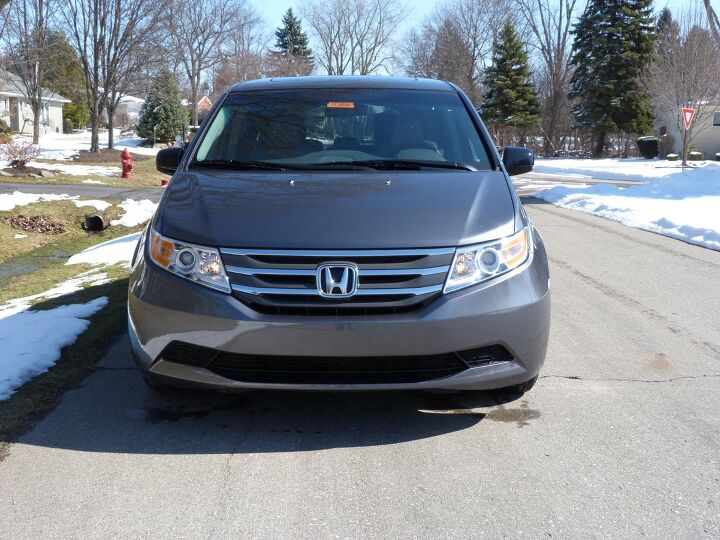






























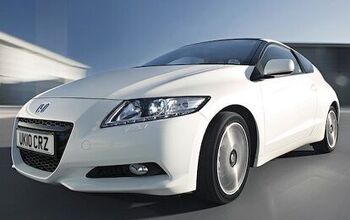
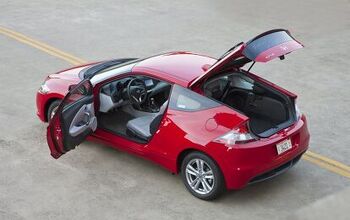
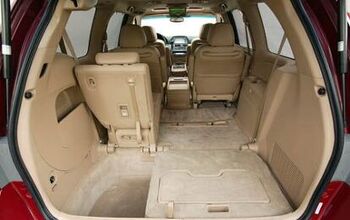
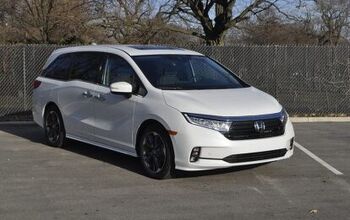
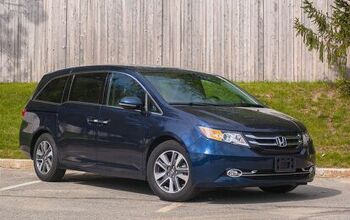








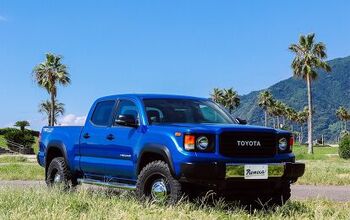

Comments
Join the conversation
I agree with all the comments about the design / functionality being superior, but as an owner I've encountered a major problem with Honda's new battery management system for the Odyssey. I'm not alone - MANY owners have experienced problems and have reported it to Honda but they refuse to fix it. See: https://sites.google.com/site/hondalowbatterydefect/ or simply Google "honda low battery defect" for lots of details and owner reports of the problem. Beware before you buy an 2011 Honda Odyssey!!!
Excellent review. I am a life long Honda owner, and for the first time I am giving Toyota a serious look. Every review I read says buy the Odyssey, but it's in the comments, either from owners or other perspective buyers that give me pause. Add a little of my own experience with my last Honda purchase ('08 Civic LX) and buying the Odyssey is not such a no-brainer anymore. My biggest issues: Lack of sound deadening. My current Civic is far louder on the road than my previous '03 was, and everything I see on the new van is that it's quieter than before, but still not as quiet at the Toyota. Then there is the cost. I can get into a nicely equipped Sienna at the local dealer for $35k. I can't even get a roof rack (at all) or fog lights for that from Honda. Finally, I am still hearing about transmission "shudders" on even the newest 2012 Odysseys. When I asked my mechanic, he said there were some '11's and '12's coming in for independent checks, as the Honda service managers were saying it was "normal behavior". Anyone that had an early 2000's Accord or Odyssey remembers this line clearly, I'm sure. He said it was the old torque converter issue coming back again, mainly on the 5 speed transmissions. Apparently they need to flash the new models just like they did the old ones. As of right now, there is no fix. I want to stay loyal to Honda, but right now, they are making it hard.